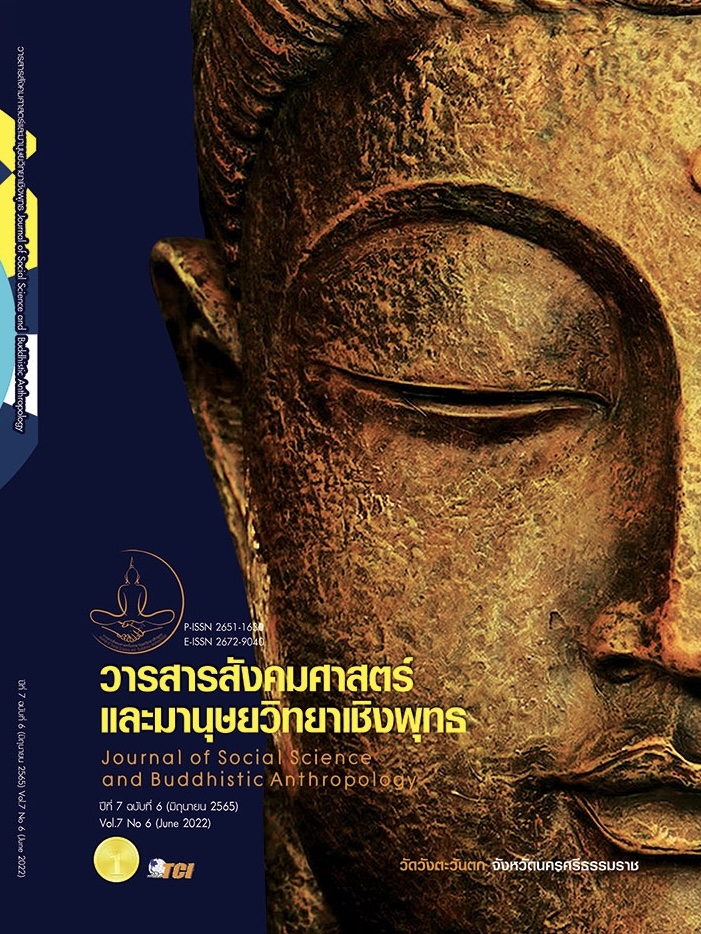DEVELOPMENT OF AN UBIQUITOUS LEARNING INSTRUCTIONAL MODEL TO SUPPORT HAND-ON PRACTICE SKILLS BY SELF-DIRECTED LEARNING OF UNDERGRADUATE STUDENT IN RAJAMANGALA UNIVERSITY OF TECHNOLOGY THANBURI
Keywords:
Ubiquitous Learning, Self-Directed Learning, Hands-On Practice SkillAbstract
The objectives of this research article were to: 1) develop an ubiquitous learning instructional model to support hands-on practice skill by self-directed learning of undergraduate students 2) study an achievement of students who learned with an ubiquitous learning instructional model and 3) study the practical skills of students who learned with an ubiquitous learning instructional. The sample of this research were 30 undergraduate students of educational technology and communication, faculty of industrial education, rajamangala university of technology thanyaburi. The instrument used in this research were: 1) an ubiquitous learning instructional model to support hands-on practice skill by self-directed learning 2) quality assessment form of an ubiquitous learning instructional 3) measurement form of students’ achievement and 4) assessment form of students’ hands-on practice skill. The results of the study revealed that 1) the quality of an ubiquitous learning instructional model to support hands-on practice skill by self-directed learning was a very good level ( = 3.37) 2) the efficiency of an ubiquitous learning instructional model to support hands-on practice skill by self-directed learning of student was a score on the practice exercises during the course (E1) represented of 81.17% and the scores from the post-test (E2) represented of 81.39% which meets a criteria at 80/80 3) the achievement through before and after learn, there was a statistically significant difference at 0.01 and 4) the practical skills of learners with an ubiquitous learning instructional model to support hands-on by self-directed learning were at a good level with an average of 3.24.
References
ชัยยงค์ พรหมวงศ์. (2556). การทดสอบประสิทธิภาพสื่อหรือชุดการสอน. วารสารศิลปากร ศึกษาศาสตร์, 5(3), 7-20.
นพดล ผู้มีจรรยา. (2556). การพัฒนารูปแบบการจัดสภาพแวดล้อมการเรียนรู้แบบยูบิควิตัสโดยใช้ปัญหาเป็นหลักเพื่อพัฒนาทักษะการคิดแก้ปัญหาของนักศึกษาระดับปริญญาบัณฑิต. วารสารวิชาการครุศาสตร์อุตสาหกรรมพระจอมเกล้าพระนครเหนือ, 4(1), 104-114.
ส.วาสนา ประวาลพฤกษ์. (2544). หลักการและเทคนิคการประเมินผลการศึกษา. กรุงเทพมหานคร: เดอะ มาสเตอร์กรุ๊ฟ.
สิทธิชัย ลายเสมา. (2556). การพัฒนารูปแบบการเรียนรู้ร่วมกันโดยใช้กระบวนการแก้ปัญหาเชิงสร้างสรรค์ในสภาพแวดล้อมการเรียนแบบยูบิควิตัสเพื่อพัฒนาทักษะการแก้ปัญหาเชิงสร้างสรรค์ของนักศึกษาระดับปริญญาตรีบัณฑิต. วารสารวิชาการครุศาสตร์อุตสาหกรรมพระจอมเกล้าพระนครเหนือ, 4(1), 93-103.
Alsheail, A. (2010). Teaching English as a Second/Foreign Language in a Ubiquitous Learning Environment : a Guide for ESL/EFL Instructors. Chico: California State University.
Hiemstra, R. (1991). Creating Environments for Effective Adult Learning (New Directions for Adult and Continuing Education. San Francisco, California: Jossey-Bass Publishers.
Junqi, W. et al. (2010). Study of Instructional design in Ubiquitous Learning. In Second International Workshop on Education Technology and Computer Science. China: IEEE.
Ogata, H. & Yano, Y. (2004). Context-Aware Support for Computer-Supported Ubiquitous Learning. In Proceeding of The 2nd IEEE International Workshop on Wireless and Mobile Technology, Workshop on Wireless and Mobile Technology in Education (pp. 27-34). Taiwan: IEEE.
Qi. & Liu. (2011). A real-time EEG-based BCI system for attention recognition in ubiquitous environment. In Proceedings of 2011 international workshop on Ubiquitous affective awareness and intelligent interaction (pp. 33-40). New York: United States: Association for Computing Machinery.
Seel B. & Glasgow Z. (1990). Exercise in Instructional Design. Columblus: Merrill Publishing Company Bell & Howell Information Company.
Weiser, M. et al. (1999). The Original of Ubiquitous Computing. Research at PARC in the late 1980s: IBM Systems Journal, 7(36), 693-696.
Yahya, S. et al. (2010). The Definition and Characteristics of Ubiquitous Learning. International Journal of Education and Development using Information and Communication Technology(IJEDICT), 6(1), 117-127.
Zacarías, F. et al. (2008). u-Teacher: Ubiquitous Learning Approach. In International Conference on Technologies for E-Learning and Digital Entertainment Edutainment: Technologies for E-Learning and Digital Entertainment (pp. 9-20). Heidelberg: Springer.
Downloads
Published
How to Cite
Issue
Section
License
Copyright (c) 2022 Journal of Social Science and Buddhistic Anthropology

This work is licensed under a Creative Commons Attribution-NonCommercial-NoDerivatives 4.0 International License.








